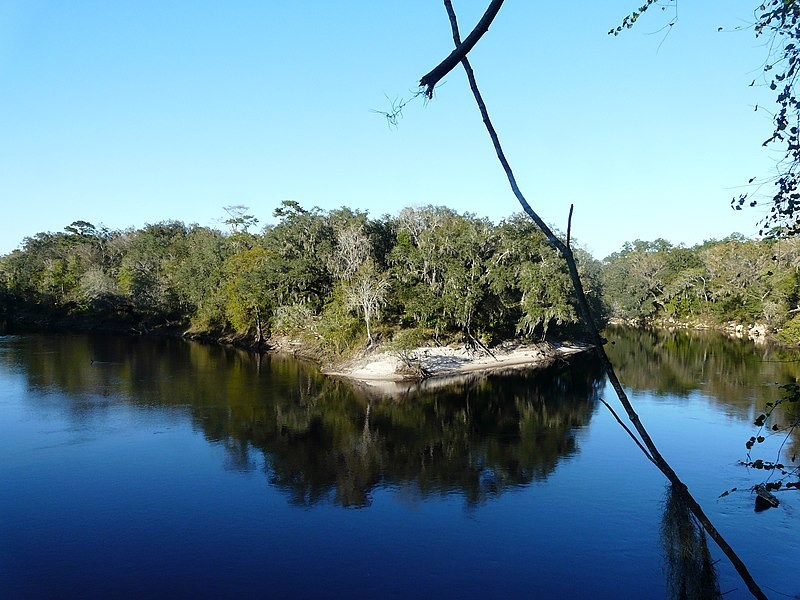Florida's freshwater springs were one of the area's principal attractions even before amusement parks sprung from the marshes around Orlando.

Creating the Springs
Before the arrival of Spanish conquistadors in the 1500s, indigenous Americans had been using the springs for thousands of years. The conquistadors' accounts of clean water streaming from enormous holes in forest floors fed legends about the Fountain of Youth's existence.
On the banks of the Suwannee River, White Sulfur Springs became one of Florida's earliest commercial tourist attractions a few hundred years later, when sulfur springs were thought to have curative benefits. The introduction of glass-bottomed boats in the early 1900s provided tourists with a fish's-eye view of Florida's springs and the immaculate underwater vistas drew early filmmakers.
Several movies and television episodes, including "Sea Hunt" and "The Creature From the Black Lagoon," were filmed underwater in Silver Springs, a set of springs in Marion County.
Florida Waters
Florida contains the world's densest concentration of freshwater springs. Every day, billions of gallons of groundwater are discharged to the surface from the state's more than 1,000 freshwater springs. Springs support Florida's inland water-based recreation economy and provide crucial habitat for aquatic wildlife such as the famed Florida manatee.
Fishing, kayaking, tubing, swimming, and scuba diving via the miles of underwater caverns that connect springs to the aquifer and pipe water to the surface attract visitors from all over the globe to Florida's springs. Springs tourism contributes to the state's rural economies.
Despite its importance to the state's tourism business, Florida's springs are in the midst of a slow-motion environmental disaster.
Development, population increase, climate change, over-pumping of the aquifer, and pollution from agriculture and sewage have all wreaked havoc on Florida's springs over the last several decades. Many springs have seen a dramatic reduction in water flow. Others have entirely ceased pouring.
One of the earliest known victims was Kissengen Spring. Kissengen Spring originally discharged more than 20 million gallons of water per day into the Peace River. During World War II, military personnel utilized the spring as a resort, including dive platforms and bathhouses.
Water Conditions
Water flows from the spring steadily decreased to a trickle between the 1930s and the 1950s. The spring ceased flowing entirely in the early 1960s. According to a survey by the United States Geological Survey, between the 1950s and 1975, groundwater levels were reduced by 60 feet. The water ceased flowing when the water level in the aquifer feeding the spring fell below the elevation of the spring vent.
The water supply to White Sulphur Springs, one of Florida's oldest tourist attractions, was likewise cut off by steadily dropping water tables, which stopped flowing for the first time in 1977.
Pollution from septic tanks, sewage, farm fertilizers, and restricted animal feeding operations filled springs with surplus nutrients when aquifers were being drained, fuelling algal blooms in springs across the state. Thick mats of green, hairy algae coat all underwater surfaces, replacing the white, sandy bottoms and waving thickets of eelgrass shown in films from the 1940s and 1950s. The springs' ecosystems are collapsing without eelgrass, which is the cornerstone of healthy springs.
There are so many algae at Silver Springs that volunteer scuba divers have to clear them by hand. Members of the Silver Springs Professional Dive Team descend once a month to brush algae off the bottoms of the glass bottom boats so that guests can see the ancient underwater movie sets, which the divers must also clean.
When Jeb Bush, then-governor of Florida, signed legislation forming the Florida Springs Initiative in 2001, the state of Florida formally acknowledged that the majority of the state's springs were in peril. The initiative offered the first of numerous funds for research, monitoring, teaching, and landowner aid to reduce sewage and fertilizer flow into springs and address diminishing spring flows.
Attempts to Restore
While many springs are in decline, current restoration efforts along Florida's Gulf Coast's spring-fed Crystal River indicate that some harm may be undone. Crystal River is the state of Florida's second-largest spring group. Decades ago, Crystal River's gin-clear clarity made it a popular fishing and scuba diving destination.
However, in the 1960s and 1970s, urbanization, dredging of canals for boat-based communities, and pollution initiated a chain of events that resulted in the river's eelgrass beds collapsing and being replaced by algal blankets in later decades. The remarkable visibility of Crystal River diminished to the point where it seldom topped 10 feet.
Using a combination of state and federal funds, the community organization Save Crystal River and the aquatic restoration company Sea & Shoreline have removed more than a quarter-billion pounds of algae and nutrient-rich muck from the bottom of Crystal River and planted more than 350,000 eelgrass plants over the last six years.
With the expansion of the replanted eelgrass beds, visibility has increased, and the area now supports a year-round population of Florida's most renowned vegetarians: manatees.
Effects
Although it didn't cure all of Crystal River's difficulties, the eelgrass replanting initiative was a success. The flow of water to Crystal River's springs is being reduced by sea level rise and groundwater pumping, and the water that comes out is becoming saltier.
While more work is to be done, steady improvements in water clarity and a growing manatee population support a thriving ecotourism industry and demonstrate what can be accomplished when state governments and local communities work together to save their springs and use the scientific data.
For similar news, don't forget to follow Nature World News!
© 2025 NatureWorldNews.com All rights reserved. Do not reproduce without permission.





